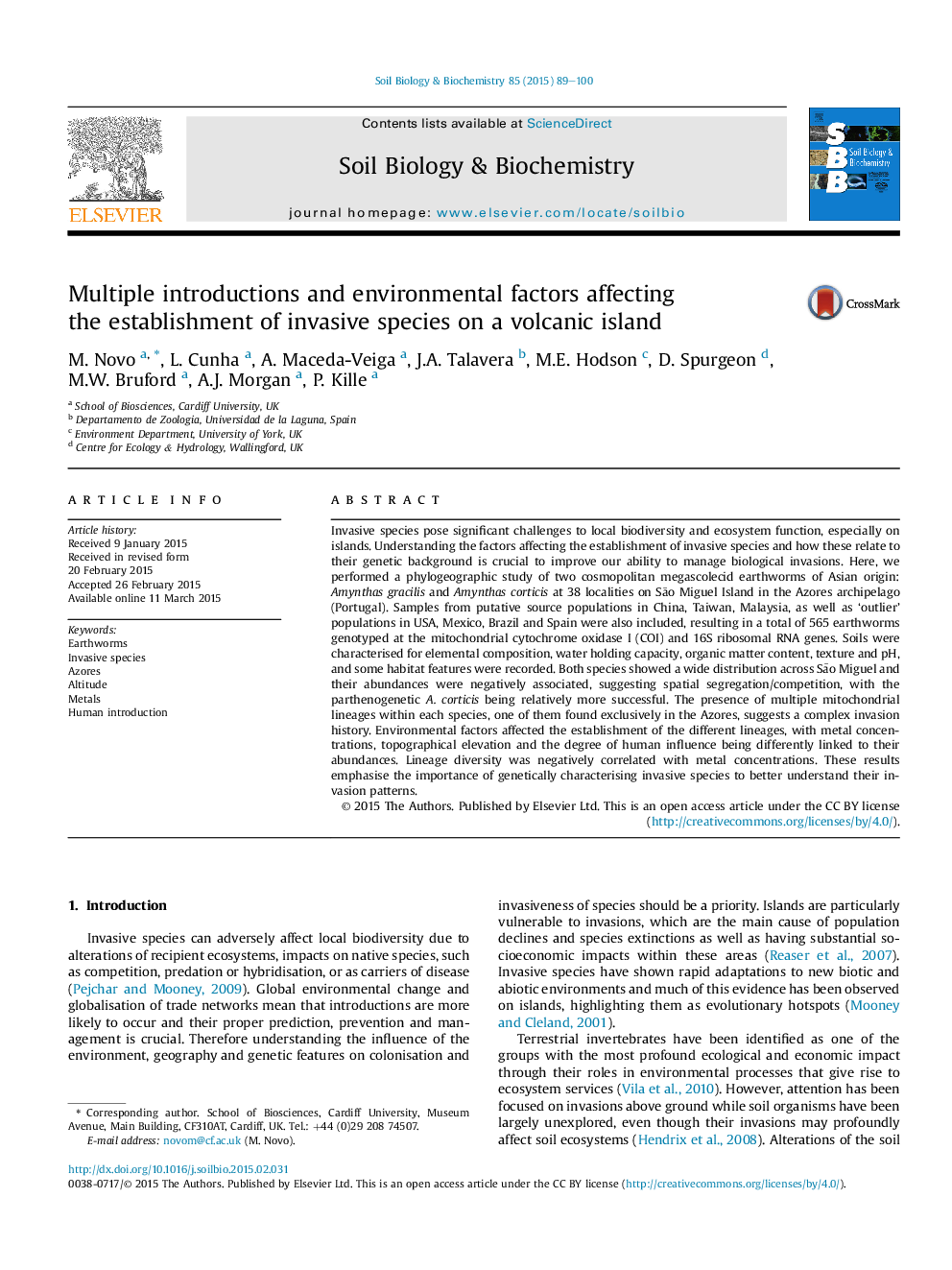| Article ID | Journal | Published Year | Pages | File Type |
|---|---|---|---|---|
| 8364176 | Soil Biology and Biochemistry | 2015 | 12 Pages |
Abstract
Invasive species pose significant challenges to local biodiversity and ecosystem function, especially on islands. Understanding the factors affecting the establishment of invasive species and how these relate to their genetic background is crucial to improve our ability to manage biological invasions. Here, we performed a phylogeographic study of two cosmopolitan megascolecid earthworms of Asian origin: Amynthas gracilis and Amynthas corticis at 38 localities on São Miguel Island in the Azores archipelago (Portugal). Samples from putative source populations in China, Taiwan, Malaysia, as well as 'outlier' populations in USA, Mexico, Brazil and Spain were also included, resulting in a total of 565 earthworms genotyped at the mitochondrial cytochrome oxidase I (COI) and 16S ribosomal RNA genes. Soils were characterised for elemental composition, water holding capacity, organic matter content, texture and pH, and some habitat features were recorded. Both species showed a wide distribution across São Miguel and their abundances were negatively associated, suggesting spatial segregation/competition, with the parthenogenetic A. corticis being relatively more successful. The presence of multiple mitochondrial lineages within each species, one of them found exclusively in the Azores, suggests a complex invasion history. Environmental factors affected the establishment of the different lineages, with metal concentrations, topographical elevation and the degree of human influence being differently linked to their abundances. Lineage diversity was negatively correlated with metal concentrations. These results emphasise the importance of genetically characterising invasive species to better understand their invasion patterns.
Related Topics
Life Sciences
Agricultural and Biological Sciences
Soil Science
Authors
M. Novo, L. Cunha, A. Maceda-Veiga, J.A. Talavera, M.E. Hodson, D. Spurgeon, M.W. Bruford, A.J. Morgan, P. Kille,
